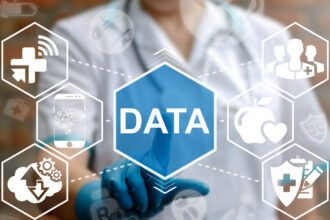Big data has created a number of major benefits in the food and beverage industry. Research from Byteant highlighted some of these benefits in a recent post. They pointed out that the global food and beverage industry is worth $81 trillion.
Food and beverage companies are using big data to identify new marketing opportunities. They can monitor trends in the market and sell products that cater to evolving tastes.
Another benefit of advances in data technology has to do with food and beverage labeling. Data analytics assists with everything from enhancing labeling software to extracting more data for compliance purposes. As IBM pointed out, this is one of the reasons that big data has improved food and beverage safety.
Businesses that deal with the production and distribution of food products must adhere to the rules and procedures that regulate the labeling of beverages and food. Some of the benefits of big data in food and beverage labeling are listed below.
Using data-driven labeling software
Big data has played an important role in the evolution of software development. Food labeling software is no exception, as big data technology has made it more versatile and reliable than ever.
You can ensure your business remains compliant by labeling the foods and beverages with nutritional data. The Food and Drug Administration (FDA) requires all food products to have labels with barcodes and ingredients and nutritional data. The data you need to disclose include the amount of cholesterol, calories, fats, sugars, proteins, vitamins, and minerals contained in the food. You can use a food & beverage labeling software to link data from production and pricing database files, weighing scales, ERP, WMS, and clocks to your labels.
This new software is highly data driven. It can extract data from various sources and uses sophisticated machine learning algorithms to ensure labels are done in accordance with recent FDA guidelines.
This will enable your food products to be traceable in all the food stores and markets that it reaches.
Validating label information with data mining
Data mining is very useful for finding new information on various products and resources. You can use data extraction tools to find out more about the nutritional requirements of various foods on the market and make sure that your own claims are properly reported.
The FDA itself uses big data to determine the safety of food, so you should do the same to ensure it is reported accurately. You remain compliant with the rules and standards of FDA by ensuring the information provided on the food labels is true and legitimate. You can do this by having a registered dietician come and inspect your food as well as its ingredients. They can give you their measurements on the nutritional information, and you can compare it with your data to see whether yours is within the correct range.
Big data makes it easier to provide compulsory information on labels
You will have an easier time making sure the right information is shared on your labels if you use data analytics to verify your findings. The FDA requires every food processor or manufacturer to include the following information on the food labels:
- Name of the product
You must give the product a specific name that will make it identifiable in the market. Consumers also refer to products by their specific names. When consumers go shopping, they have a specific brand for each product they want.
- Name and address of the manufacturer
The name and address of the manufacturer, packer, or distributor must be on the label. This will enable consumers to contact you if they have any questions or complaints about your brand. If your brand is small, you can include an email or website URL that will make it easier for people to reach you.
- Ingredient list
The food product must contain a list of ingredients arranged in a descending order of predominance. This is mainly in products that have a variety of ingredients. Single ingredient products do not necessarily need to follow this rule.
- Nutritional facts
These are mandatory on most food products. The FDA has set very specific rules on the nutrition data panel. The full version of data must contain 14 key nutrients. Some products can have the slim version that allows only six key nutrients on the list. If the package is small, the nutrition facts panel can be in the form of a linear list to save space.
The panel must also meet the minimum font size requirements.
- Allergens
It is mandatory for you to alert consumers through the label if your product contains any of the eight major food allergens. They include peanuts, fish, milk, tree nuts, soybeans, shellfish, eggs, and wheat. You can highlight them or use a bolder font on the label in order to make them easily visible to the customer.
- Warning statements
The FDA also has a list of products and supplements that must contain warning labels, like alcohol.
Ensure your business is compliant with the food and beverage labeling requirements today to avoid any run-ins with the FDA. By adopting a top labeling software, being compliant will be easy for your firm.
Big Data is Invaluable for Food and Beverage Labeling
There are a lot of benefits of big data in the food and beverage industry. You can use data analytics technology to make sure that your food labels are accurately and efficiently created.








